Knee Arthroscopy
Minimally invasive diagnoses and treatments
Keyhole knee surgery
Knee Arthroscopy, often referred to as keyhole knee surgery, is a minimally invasive procedure that allows for diagnosis and treatment of a number of knee conditions.
Using a small fibre optic camera inserted through a tiny incision, Mr Freedman is able to view the interior of the knee joint on a television screen and use specialised instruments to perform various treatments. These treatments can range from repairing torn cartilage, meniscal repair and reconstructing ligaments like the ACL. The procedure is typically quick, taking less than 30 minutes, and patients can usually return home the same day, making it a convenient option for addressing specific knee issues.
The advantages of knee arthroscopy includes less postoperative pain, faster recovery, and minimal scarring due to the small incisions used, which often don’t require sutures. Following the procedure, patients might use crutches for a short period, but mobility is generally restored quickly. While not suitable for treating extensive cartilage loss typical of advanced arthritis, arthroscopy is effective for specific conditions like meniscus tears, loose cartilage removal, and ligament reconstructions, offering a tailored treatment that aligns with the patient’s unique needs.
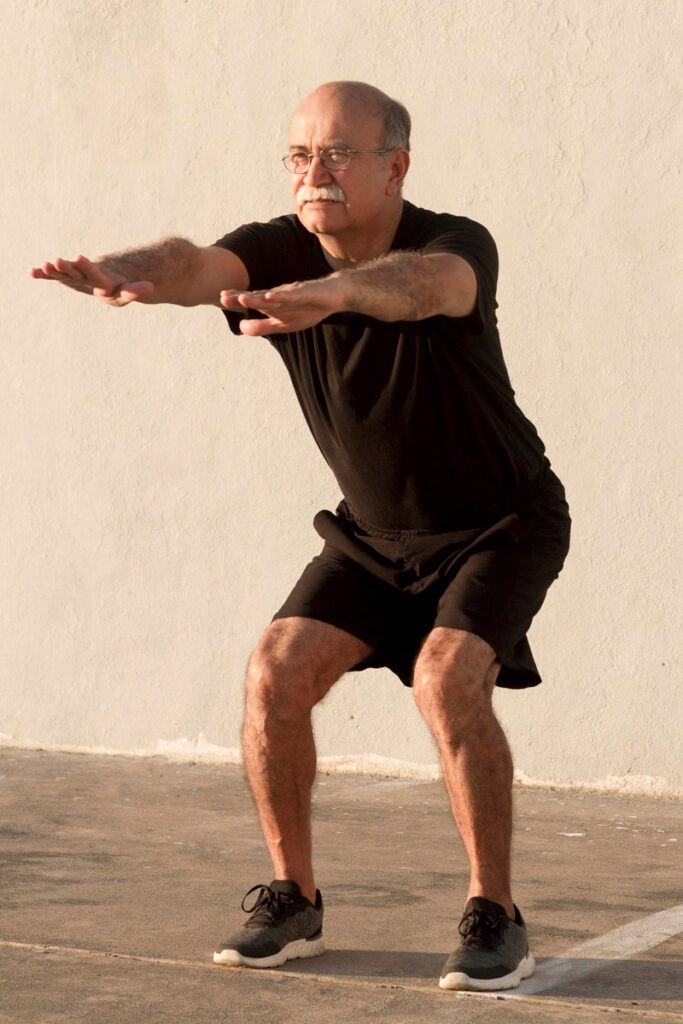
The benefits of knee arthroscopy
- Rapid Recovery: Knee arthroscopy involves smaller incisions than traditional knee surgery, leading to faster healing and a quicker return to normal activities, often allowing patients to resume their daily routines shortly after the procedure.
- Reduced Surgical Impact: With the use of tiny cameras and instruments, knee arthroscopy minimises the trauma to surrounding tissues, resulting in less postoperative pain and reduced reliance on pain medications during recovery.
- Precise Visual Assessment: The camera used in knee arthroscopy provides real-time, high-definition images of the knee’s interior, offering Mr Freedman the ability to diagnose issues more accurately and tailor treatments specifically to each patient’s needs.
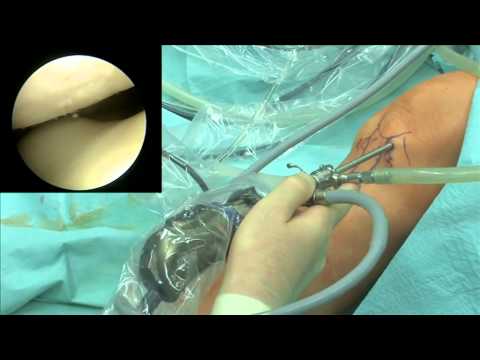
Case Examples
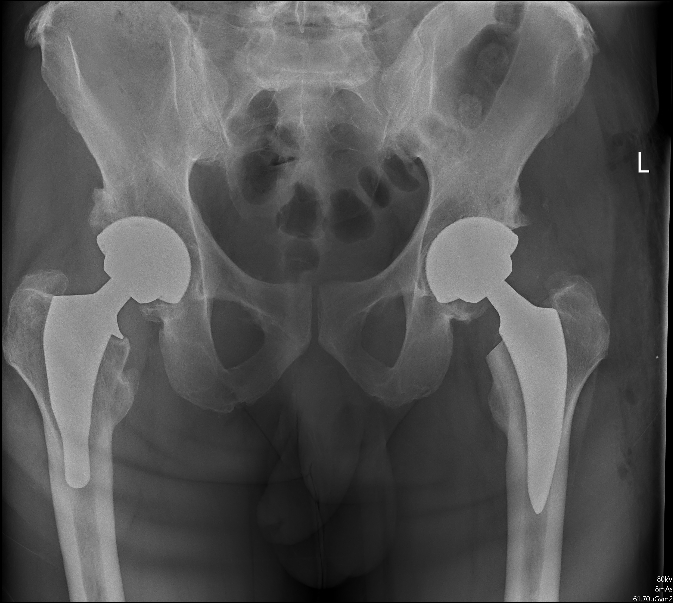
Before
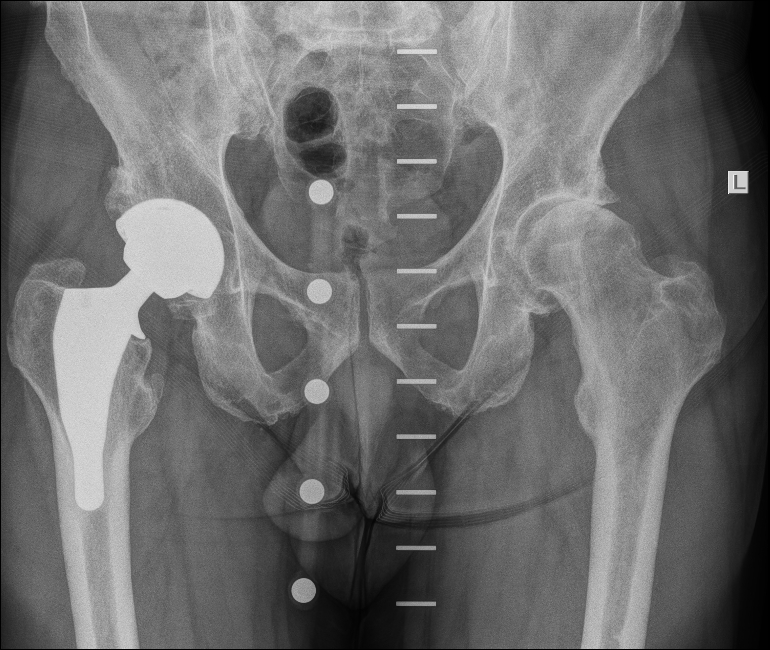
After
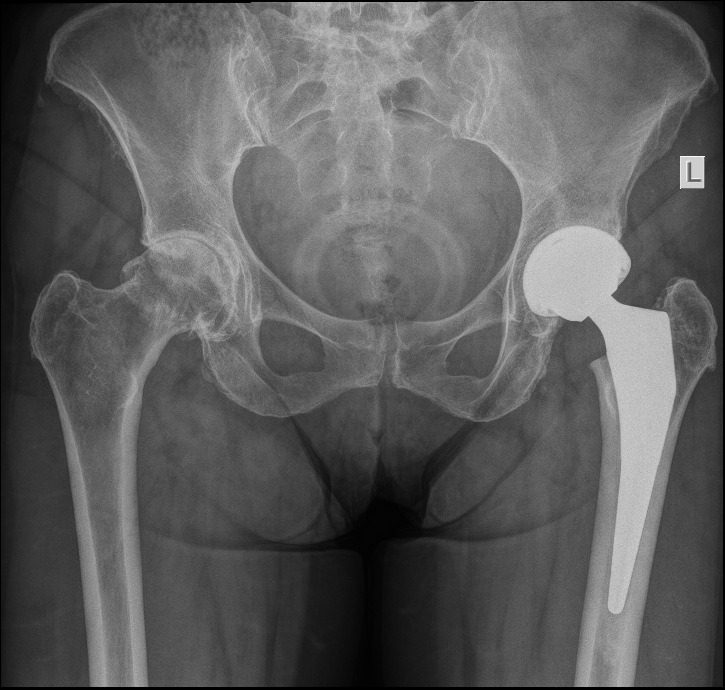
Before
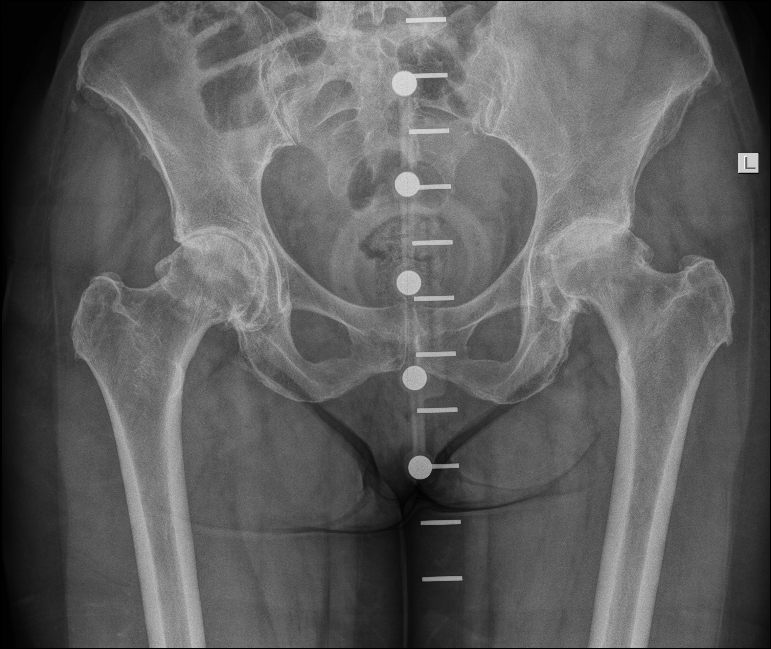
After
Mr Freedman’s training & experience
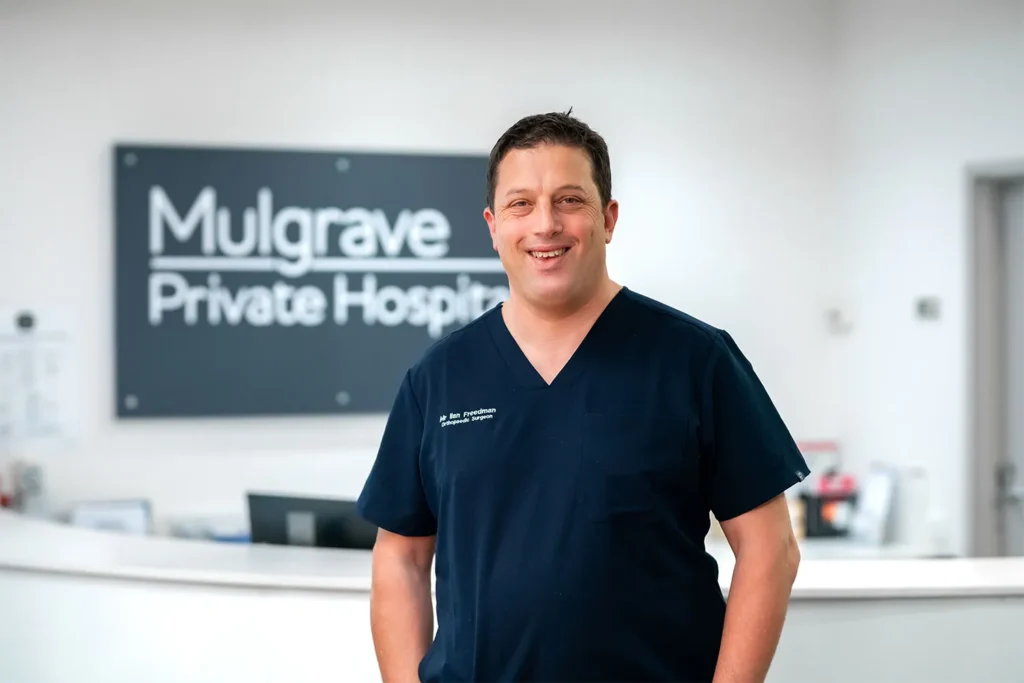
An Internationally-trained and renowned Orthopaedic surgeon, Mr Freeman brings over a decade of experience to providing a meticulous standard of care.
The success of technically complicated surgery depends on several elements, but one important factor is having a highly-trained and experienced surgeon.
Mr Freedman completed a fellowship in the UK to train in hip arthroscopy with Professor Damian Griffin, a world-renowned expert in hip arthroscopy and hip preservation surgery.
While on fellowship in the UK, Mr Freedman’s supervisor, Professor Griffin, received an invitation to observe a new hip replacement technique in Paris with Dr. Frederic Laude, a world expert in Direct Anterior hip surgery. As fate would have it, other commitments prevented Prof. Griffin from attending, so he sent Mr Freedman in his place, and he was amazed by the innovative procedure, the minimal incision, and the quick recovery of patients. Mr Freedman later returned to Paris to complete a fellowship under Dr Frederic Laude.
Upon returning to Australia, Mr Freedman, successfully implemented anterior approach hip replacements in his practice, leading to rapid growth in his case numbers and the eventual standardisation of this technique, even for complex surgeries.
-
Internationally Trained and Recognised
Mr Freedman has trained under some of the best hip surgeons in Europe.
-
Cutting-Edge Techniques
Mr Freedman employs advanced technology and techniques to ensure the best possible outcomes for his patients.
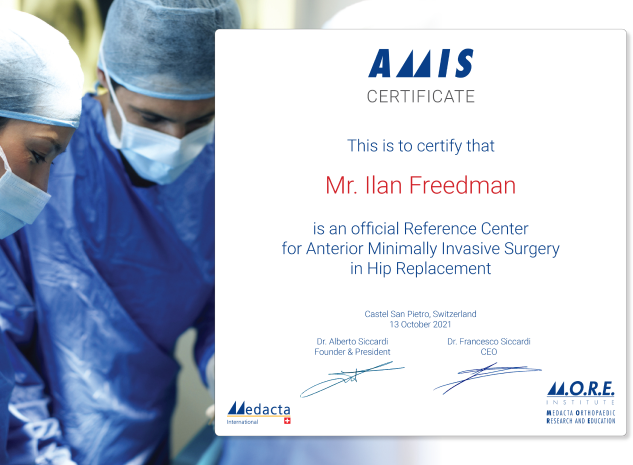
Advanced diagnosis and treatment tools
Knee arthroscopy is an excellent tool for diagnosing and treating a range of conditions, with minimal incision required and rapid recovery time.
Frequently asked questions
Knee Arthroscopy is particularly useful for treating soft tissue problems inside the knee – such as cartilage tears or tears of the meniscus, which is a c-shaped shock-absorbing disc that sits between the two main knee bones (femur and tibia). Knee arthroscopy is also very useful for repairing or reconstructing ligaments (such as the ACL) and can also be used to assist in fracture repairs and to remove loose or damaged cartilage or bone from inside the knee
The complication rate from knee arthroscopy is extremely low. The procedure is quick, performed through very small incisions and is usually a procedure performed on relatively young patients with few medical problems. Knee arthroscopy is usually performed as “day surgery” with patients going home the same day and not required to stay overnight in hospital. Nevertheless, all surgical procedures carry some small risks. For knee arthroscopy, this includes small risk of blood clots, infection, or cartilage damage. Multiple precautions are taken to minimise the risks and will be discussed with you.
Our locations
- Main Practice Consulting Rooms
- Other Clinic Consultations
- Surgery Operating locations
- Telehealth Consultations
Our main practice consulting rooms are located at:
Mr Ilan Freedman
Suite 2, Monash House Private Hospital
271 Clayton Road, Clayton VIC 3168.
Driving: Monash House Private Hospital is situated on Clayton Rd, across the road from Monash Medical Clinic. Clayton Road is easily accessible form Princes Highway (Dandenong Rd, North Rd or Centre Rd).
Parking: Parking available onsite (paid – inexpensive) and neighbouring streets (free)
Public transport: 3 minutes walk from Clayton Railway Station. Bus stop directly outside.
Location in the hospital: We are located on the ground floor, opposite the hospital coffee shop and next door to Capital Radiology
Mr Freedman also consults regularly at the following clinics.
Mulgrave Private Hospital Consulting Suites
Address: Blanton Dr, Mulgrave VIC 3170
Parking: Inexpensive onsite parking
The Bays Private Hospital Consulting Suites – Mornington
Address: Vale St, Mornington, 3931
Parking: Free Parking Available on site
Location: We are located in Suite 15 at The Bays.
Warragul
Address: 33 Victoria Street, Warragul 3820
Parking: Free Street Parking
Maryvale Private Hospital
Address: 286 Maryvale Rd, Morwell, 3840
Parking: Free Street Parking
Bay Street Specialist Centre
Address: Suite 4, 214 Bay Street, Brighton VIC 3186
Parking: Free Street Parking
Mr Freedman’s surgery operating locations are:
Mulgrave Private Hospital
Address: Cnr Police Rd & Gladstone Rd, Mulgrave, 3170
The Bays Private Hospital, Mornington
Address: 262 Main St, Mornington VIC 3931
Monash House Private Hospital
Address: 271 Clayton Rd, Clayton VIC 3168
Maryvale Private Hospital
Address: 286 Maryvale Rd, Morwell VIC 3840
Telehealth Consultation
We are pleased to offer telehealth appointments, allowing you to consult with Mr Freedman from the comfort of your home. Whether for a follow-up, pre-surgical consultation, or orthopaedic advice, our telehealth services provide expert care without the need to travel. Using secure and easy-to-use technology, our telehealth appointments fit seamlessly into your schedule, ensuring the same high standard of care as an in-person visit.

Get back to life sooner
We understand that seeking care for your hip or knee condition is an important decision, and we are here to provide you with the support and expertise you need.
Please take a moment to fill out the following information so that we can better understand your needs and how we can assist you.
